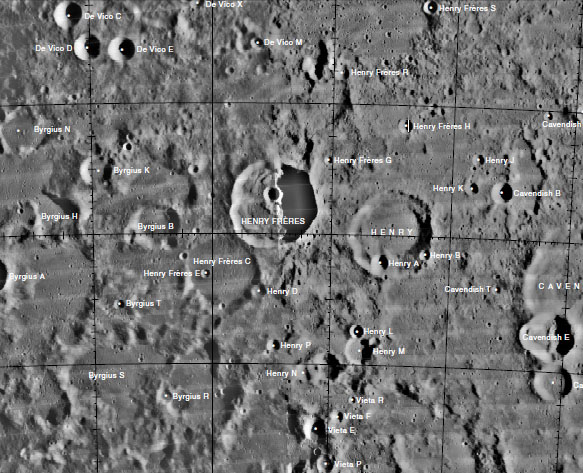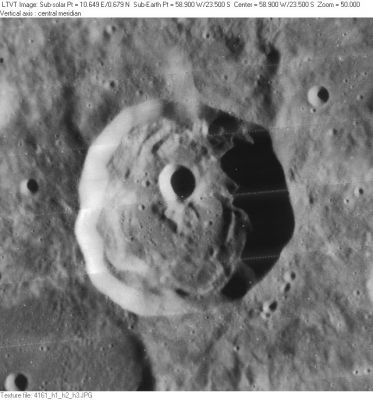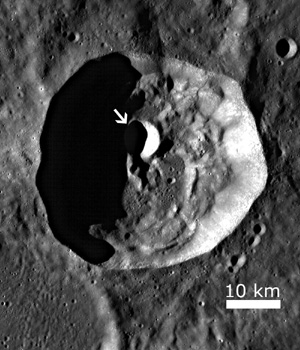Difference between revisions of "Henry Frères"
(Created page with "<div id="content_view" class="wiki" style="display: block"> =Henry Frères= ''(current IAU name; formerly '''Prosper Henry'''; and before that, part of '''Frères Henry''')'...") |
|||
| Line 7: | Line 7: | ||
|} | |} | ||
<div id="toc"> | <div id="toc"> | ||
| − | + | ||
| − | |||
{| class="wiki_table" | {| class="wiki_table" | ||
| | | | ||
| Line 34: | Line 33: | ||
* Jointly named for: [http://en.wikipedia.org/wiki/Paul_Henry_and_Prosper_Henry Paul-Pierre Henry] (1848-1905) and [http://en.wikipedia.org/wiki/Paul_Henry_and_Prosper_Henry Mathieu-Prosper Henry] (1849-1903); French astronomers. These [http://en.wikipedia.org/wiki/Paul_Henry_and_Prosper_Henry brothers] were noted pioneers in the field of astronomical photography. Their development of suitably designed and equipped telescopes made possible contemplation, in the late 1800's, of the hugely ambitious, international ''Cartes du Ciel'' project, to document, photographically, all the stars in the sky. In their day, the Henrys' lunar photographs, taken at the Paris Observatory, were much admired and are mentioned several times by [[Elger|Elger]], even though they were soon overshadowed by the more systematic program of [[Loewy|Loewy]] and [[Puiseux|Puiseux]], at the same observatory. The Henry brothers were particularly noted for the joint nature of all their work, it being virtually impossible to distinguish which brother had contributed what in most of their many publications. | * Jointly named for: [http://en.wikipedia.org/wiki/Paul_Henry_and_Prosper_Henry Paul-Pierre Henry] (1848-1905) and [http://en.wikipedia.org/wiki/Paul_Henry_and_Prosper_Henry Mathieu-Prosper Henry] (1849-1903); French astronomers. These [http://en.wikipedia.org/wiki/Paul_Henry_and_Prosper_Henry brothers] were noted pioneers in the field of astronomical photography. Their development of suitably designed and equipped telescopes made possible contemplation, in the late 1800's, of the hugely ambitious, international ''Cartes du Ciel'' project, to document, photographically, all the stars in the sky. In their day, the Henrys' lunar photographs, taken at the Paris Observatory, were much admired and are mentioned several times by [[Elger|Elger]], even though they were soon overshadowed by the more systematic program of [[Loewy|Loewy]] and [[Puiseux|Puiseux]], at the same observatory. The Henry brothers were particularly noted for the joint nature of all their work, it being virtually impossible to distinguish which brother had contributed what in most of their many publications. | ||
| − | * "Frères" means "brothers" in French, and [[Whitaker|Whitaker]] (p. 150) says the name '''Frères Henry''' was first introduced on a map published by [[Gaudibert|Gaudibert]] in 1887. Gaudibert assigned the name to two similar and closely placed craters near the Moon's southwest limb -- the craters presently known as '''Henry Frères''' (eastern) and '''Henry''' (western). To facilitate indicating how they had been known in the past, the two craters were given separate entries (2177 and 2178 -- their ''[[Collated%20List|Collated List]]'' numbers), joined by a bracket, in the original 1935 IAU catalog of ''[[Blagg%20and%20M%C3%BCller|Blagg and Müller]]'', but in the accompanying south-up map the name '''Frères Henry''' was written across the two craters without distinction. Writing as late as 1958, Joseph [[Ashbrook|Ashbrook]], in his popular ''Sky and Telescope'' column, assumed this was still the proper name, and noted "this unusual joint nomenclature" of "a close pair of twin craters bearing a single name." Gerard Kuiper, in [[PLA%20Table%20III|Table III]] of his ''Photographic Lunar Atlas'', decided separate names would be more appropriate, so he dropped the joint nomenclature and declared that ''[[Collated%20List|Collated List]]'' #2177 (the eastern crater and the present plain [[Henry|Henry]]) should henceforth be known as '''Paul Henry'''; while ''[[Collated%20List|Collated List]]'' #2178 (the western crater and the present [[Henry%20Fr%C3%A8res|Henry Frères]]) should be known as '''Prosper Henry'''. This change was approved in ''[[IAU%20Transactions%20XIB|IAU Transactions XIB]]'' (1961). The two craters were individually labeled (in this way) in the ''[[System%20of%20Lunar%20Craters|System of Lunar Craters]]'' (approved in 1964) and several newly-named [[lettered%20crater|lettered craters]] (not included in the original nomenclature) were assigned to either Prosper (on the west) or Paul (on the east), but not both. They are labeled in the same way on the slightly later [http://www.lpi.usra.edu/resources/mapcatalog/LAC/lac92/ LAC 92]; and also in ''[[NASA%20SP-241|NASA SP-241]]'' (published in 1971). Oddly, the list of changes at the rear of that book states that the crater labeled '''Paul Henry''' in that atlas (the present plain [[Henry|Henry]]) is an IAU approved change from the former name '''Freres''', while the one labeled '''Prosper Henry''' (the present '''Henry Frères''') is an IAU approved change from '''Henry'''. But the dates when these changes occurred are not specified, and it would seem that ''[[NASA%20SP-241|NASA SP-241]]'' was not using the proper IAU notation as of the date of its publication. It appears that the change to the current system of the western crater being called '''Henry Frères''' (honoring both Paul and Prosper Henry), and the eastern crater being called plain [[Henry|Henry]] (honoring a completely different person -- 19th century American physicist Joseph Henry) was made in 1970 (and published in [[Menzel%2C%201971|Menzel, 1971]]). But oddly, apparently through a misprint or an oversight, the coordinates of both newly-named craters were listed as 24S, 59W; making it difficult to know which crater was actually intended to have which name. At some time the [[lettered%20crater|lettered craters]] associated with '''Prosper Henry''' in the ''[[System%20of%20Lunar%20Craters|System of Lunar Craters]]'' were also reassigned to the new '''Henry Frères''', while those formerly associated with '''Paul Henry''' were reassigned to the new plain [[Henry|Henry]] -- but no record of this can be found in the [[IAU%20Transactions|IAU Transactions]]. <span class="membersnap">- | + | * "Frères" means "brothers" in French, and [[Whitaker|Whitaker]] (p. 150) says the name '''Frères Henry''' was first introduced on a map published by [[Gaudibert|Gaudibert]] in 1887. Gaudibert assigned the name to two similar and closely placed craters near the Moon's southwest limb -- the craters presently known as '''Henry Frères''' (eastern) and '''Henry''' (western). To facilitate indicating how they had been known in the past, the two craters were given separate entries (2177 and 2178 -- their ''[[Collated%20List|Collated List]]'' numbers), joined by a bracket, in the original 1935 IAU catalog of ''[[Blagg%20and%20M%C3%BCller|Blagg and Müller]]'', but in the accompanying south-up map the name '''Frères Henry''' was written across the two craters without distinction. Writing as late as 1958, Joseph [[Ashbrook|Ashbrook]], in his popular ''Sky and Telescope'' column, assumed this was still the proper name, and noted "this unusual joint nomenclature" of "a close pair of twin craters bearing a single name." Gerard Kuiper, in [[PLA%20Table%20III|Table III]] of his ''Photographic Lunar Atlas'', decided separate names would be more appropriate, so he dropped the joint nomenclature and declared that ''[[Collated%20List|Collated List]]'' #2177 (the eastern crater and the present plain [[Henry|Henry]]) should henceforth be known as '''Paul Henry'''; while ''[[Collated%20List|Collated List]]'' #2178 (the western crater and the present [[Henry%20Fr%C3%A8res|Henry Frères]]) should be known as '''Prosper Henry'''. This change was approved in ''[[IAU%20Transactions%20XIB|IAU Transactions XIB]]'' (1961). The two craters were individually labeled (in this way) in the ''[[System%20of%20Lunar%20Craters|System of Lunar Craters]]'' (approved in 1964) and several newly-named [[lettered%20crater|lettered craters]] (not included in the original nomenclature) were assigned to either Prosper (on the west) or Paul (on the east), but not both. They are labeled in the same way on the slightly later [http://www.lpi.usra.edu/resources/mapcatalog/LAC/lac92/ LAC 92]; and also in ''[[NASA%20SP-241|NASA SP-241]]'' (published in 1971). Oddly, the list of changes at the rear of that book states that the crater labeled '''Paul Henry''' in that atlas (the present plain [[Henry|Henry]]) is an IAU approved change from the former name '''Freres''', while the one labeled '''Prosper Henry''' (the present '''Henry Frères''') is an IAU approved change from '''Henry'''. But the dates when these changes occurred are not specified, and it would seem that ''[[NASA%20SP-241|NASA SP-241]]'' was not using the proper IAU notation as of the date of its publication. It appears that the change to the current system of the western crater being called '''Henry Frères''' (honoring both Paul and Prosper Henry), and the eastern crater being called plain [[Henry|Henry]] (honoring a completely different person -- 19th century American physicist Joseph Henry) was made in 1970 (and published in [[Menzel%2C%201971|Menzel, 1971]]). But oddly, apparently through a misprint or an oversight, the coordinates of both newly-named craters were listed as 24S, 59W; making it difficult to know which crater was actually intended to have which name. At some time the [[lettered%20crater|lettered craters]] associated with '''Prosper Henry''' in the ''[[System%20of%20Lunar%20Craters|System of Lunar Craters]]'' were also reassigned to the new '''Henry Frères''', while those formerly associated with '''Paul Henry''' were reassigned to the new plain [[Henry|Henry]] -- but no record of this can be found in the [[IAU%20Transactions|IAU Transactions]]. <span class="membersnap">- Jim Mosher</span> |
| − | * In [[Neison%2C%201876|Neison]] (p. 394), the present crater was known as "[[Cavendish|Cavendish]] C". Its eastern neighbor (the present [[Henry|Henry]]) was known as "[[Cavendish|Cavendish]] B". According to ''[[Blagg%20and%20M%C3%BCller|Blagg and Müller]]'' these names had been used earlier by [[Beer%20and%20M%C3%A4dler|Beer and Mädler]]. <span class="membersnap">- | + | * In [[Neison%2C%201876|Neison]] (p. 394), the present crater was known as "[[Cavendish|Cavendish]] C". Its eastern neighbor (the present [[Henry|Henry]]) was known as "[[Cavendish|Cavendish]] B". According to ''[[Blagg%20and%20M%C3%BCller|Blagg and Müller]]'' these names had been used earlier by [[Beer%20and%20M%C3%A4dler|Beer and Mädler]]. <span class="membersnap">- Jim Mosher</span> |
* '''Paul Henry Delta''' (elevation north of both the '''Henry''' craters) (see Chart 78 in the ''Times Atlas of the Moon''). | * '''Paul Henry Delta''' (elevation north of both the '''Henry''' craters) (see Chart 78 in the ''Times Atlas of the Moon''). | ||
<br /> | <br /> | ||
| Line 49: | Line 48: | ||
* Ashbrook, J. The brothers Henry and the ''Carte du Ciel''. ''Sky and Telescope'', June, 1958, p. 394. Reprinted in ''[[Ashbrook%2C%201984|The Astronomical Scrapbook]]'' (Cambridge University Press, 1984), Ch. 81. | * Ashbrook, J. The brothers Henry and the ''Carte du Ciel''. ''Sky and Telescope'', June, 1958, p. 394. Reprinted in ''[[Ashbrook%2C%201984|The Astronomical Scrapbook]]'' (Cambridge University Press, 1984), Ch. 81. | ||
| − | * Both brothers Henry are mentioned on page 1880 of ''Burnham's Celestial Handbook'' (Volume 3), because they made the first photographs of the nebulosity in the star cluster known as the ''Pleiades'' (Messier 45 in Taurus). <span class="membersnap">- | + | * Both brothers Henry are mentioned on page 1880 of ''Burnham's Celestial Handbook'' (Volume 3), because they made the first photographs of the nebulosity in the star cluster known as the ''Pleiades'' (Messier 45 in Taurus). <span class="membersnap">- DannyCaes <small>Jul 4, 2015</small></span> |
| − | <br /> A curiosity...<br /> A certain '''M.M. Henry''' is mentioned on page 97 of T.W.Webb's ''Celestial Objects for Common Telescopes'', Volume 1; ''The Solar System'' (chapter THE MOON). Who was this '''M.M. Henry'''? (according to T.W.Webb this person seems to have observed the moon through a large telescope at Paris).<br /> This must have been '''Messieurs Henry''' ('''MM. Henry''').<br /> Sometimes... while reading about the moon (in T.W.Webb's) one should think French...<br /> <span class="membersnap">- | + | <br /> A curiosity...<br /> A certain '''M.M. Henry''' is mentioned on page 97 of T.W.Webb's ''Celestial Objects for Common Telescopes'', Volume 1; ''The Solar System'' (chapter THE MOON). Who was this '''M.M. Henry'''? (according to T.W.Webb this person seems to have observed the moon through a large telescope at Paris).<br /> This must have been '''Messieurs Henry''' ('''MM. Henry''').<br /> Sometimes... while reading about the moon (in T.W.Webb's) one should think French...<br /> <span class="membersnap">- DannyCaes <small>Jul 4, 2015</small></span><br /> |
---- | ---- | ||
[[Alphabetical%20Index|Named Features]] -- Prev: [[Hendrix|Hendrix]] -- Next: [[Henry|Henry]]<br /> | [[Alphabetical%20Index|Named Features]] -- Prev: [[Hendrix|Hendrix]] -- Next: [[Henry|Henry]]<br /> | ||
---- | ---- | ||
| − | + | </div> | |
Revision as of 16:26, 15 April 2018
Contents
Henry Frères
(current IAU name; formerly Prosper Henry; and before that, part of Frères Henry)
|
Lat: 23.57°S, Long: 58.99°W, Diam: 41.7 km, Depth: 3.75 km, Rükl: 51 |
Left: LO-IV-161H.
Right: LROC WAC image (No. M117880746ME). Arrow points to the small crater within Henry Frères, which featured a boulder track in NAC M122597190L image.
Images
LPOD Photo Gallery Lunar Orbiter Images
Maps
(LAC zone 92B4) LAC map Geologic map
Description
Wikipedia
Additional Information
- IAU page: Henry Frères
- Depth data from Kurt Fisher database
- Westfall, 2000: 3.75 km
- In LO-IV-161H, the height of the east rim above the floor varies from 2600 to 3600 m.
- Included on the ALPO list of banded craters
Nomenclature
- Jointly named for: Paul-Pierre Henry (1848-1905) and Mathieu-Prosper Henry (1849-1903); French astronomers. These brothers were noted pioneers in the field of astronomical photography. Their development of suitably designed and equipped telescopes made possible contemplation, in the late 1800's, of the hugely ambitious, international Cartes du Ciel project, to document, photographically, all the stars in the sky. In their day, the Henrys' lunar photographs, taken at the Paris Observatory, were much admired and are mentioned several times by Elger, even though they were soon overshadowed by the more systematic program of Loewy and Puiseux, at the same observatory. The Henry brothers were particularly noted for the joint nature of all their work, it being virtually impossible to distinguish which brother had contributed what in most of their many publications.
- "Frères" means "brothers" in French, and Whitaker (p. 150) says the name Frères Henry was first introduced on a map published by Gaudibert in 1887. Gaudibert assigned the name to two similar and closely placed craters near the Moon's southwest limb -- the craters presently known as Henry Frères (eastern) and Henry (western). To facilitate indicating how they had been known in the past, the two craters were given separate entries (2177 and 2178 -- their Collated List numbers), joined by a bracket, in the original 1935 IAU catalog of Blagg and Müller, but in the accompanying south-up map the name Frères Henry was written across the two craters without distinction. Writing as late as 1958, Joseph Ashbrook, in his popular Sky and Telescope column, assumed this was still the proper name, and noted "this unusual joint nomenclature" of "a close pair of twin craters bearing a single name." Gerard Kuiper, in Table III of his Photographic Lunar Atlas, decided separate names would be more appropriate, so he dropped the joint nomenclature and declared that Collated List #2177 (the eastern crater and the present plain Henry) should henceforth be known as Paul Henry; while Collated List #2178 (the western crater and the present Henry Frères) should be known as Prosper Henry. This change was approved in IAU Transactions XIB (1961). The two craters were individually labeled (in this way) in the System of Lunar Craters (approved in 1964) and several newly-named lettered craters (not included in the original nomenclature) were assigned to either Prosper (on the west) or Paul (on the east), but not both. They are labeled in the same way on the slightly later LAC 92; and also in NASA SP-241 (published in 1971). Oddly, the list of changes at the rear of that book states that the crater labeled Paul Henry in that atlas (the present plain Henry) is an IAU approved change from the former name Freres, while the one labeled Prosper Henry (the present Henry Frères) is an IAU approved change from Henry. But the dates when these changes occurred are not specified, and it would seem that NASA SP-241 was not using the proper IAU notation as of the date of its publication. It appears that the change to the current system of the western crater being called Henry Frères (honoring both Paul and Prosper Henry), and the eastern crater being called plain Henry (honoring a completely different person -- 19th century American physicist Joseph Henry) was made in 1970 (and published in Menzel, 1971). But oddly, apparently through a misprint or an oversight, the coordinates of both newly-named craters were listed as 24S, 59W; making it difficult to know which crater was actually intended to have which name. At some time the lettered craters associated with Prosper Henry in the System of Lunar Craters were also reassigned to the new Henry Frères, while those formerly associated with Paul Henry were reassigned to the new plain Henry -- but no record of this can be found in the IAU Transactions. - Jim Mosher
- In Neison (p. 394), the present crater was known as "Cavendish C". Its eastern neighbor (the present Henry) was known as "Cavendish B". According to Blagg and Müller these names had been used earlier by Beer and Mädler. - Jim Mosher
- Paul Henry Delta (elevation north of both the Henry craters) (see Chart 78 in the Times Atlas of the Moon).
Lettered Craters

Excerpt from the USGS Digital Atlas of the Moon.
LROC Articles
LPOD Articles
Bibliography
- Ashbrook, J. The brothers Henry and the Carte du Ciel. Sky and Telescope, June, 1958, p. 394. Reprinted in The Astronomical Scrapbook (Cambridge University Press, 1984), Ch. 81.
- Both brothers Henry are mentioned on page 1880 of Burnham's Celestial Handbook (Volume 3), because they made the first photographs of the nebulosity in the star cluster known as the Pleiades (Messier 45 in Taurus). - DannyCaes Jul 4, 2015
A curiosity...
A certain M.M. Henry is mentioned on page 97 of T.W.Webb's Celestial Objects for Common Telescopes, Volume 1; The Solar System (chapter THE MOON). Who was this M.M. Henry? (according to T.W.Webb this person seems to have observed the moon through a large telescope at Paris).
This must have been Messieurs Henry (MM. Henry).
Sometimes... while reading about the moon (in T.W.Webb's) one should think French...
- DannyCaes Jul 4, 2015
Named Features -- Prev: Hendrix -- Next: Henry

